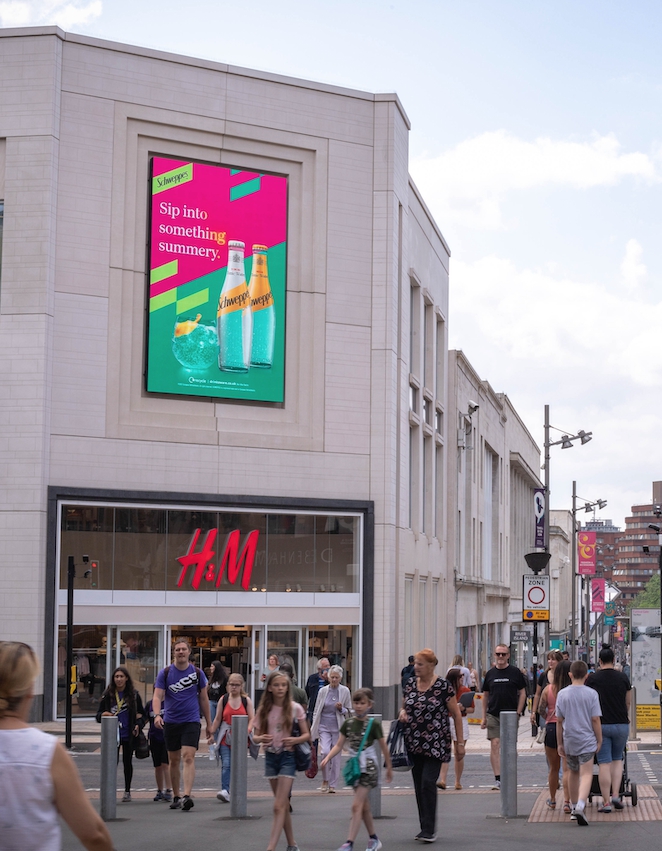Sheffield – City Recovery Piece

02/08/2021
Category not found
/Category not found
/Category not found
/Category not found
/Category not found
After a long time under Covid-19 restrictions and being stuck between four walls, it is safe to say we are all starting to enjoy some form of normality. From early March the UK has been moving through the easing of lockdown and having the luxury to spend more time out and about, whether that be at the cinema, shopping or have a much needed night out. This, of course, is fantastic news for the OOH industry, but just how quick have the public been getting out and about?
This month, OPEN have taken a look at how one of our core cities, Sheffield, is recovering. With data from Sheffield BID Company and Centre For Cities we can see how much the public have been out and about and how certain factors are recovering from a long time of devastating restrictions.
Data from Sheffield BID company has shown footfall within the BID areas in the city has continued to rise from March onwards. From a figure of 575,291 in March to an impressive 1,156,316 in June, footfall has grown by over a massive 100%. Although these figures look extremely promising, it is important to compare them to a previous ‘normal’ year. Below is a graph comparing the 2021 figures to that of 2019. Although the figures are still lower than 2019, it is encouraging to see that they are still only 29% below and continually climbing.

Other important points to note from Sheffield BID Company data are the trends within the rising and falling of footfall throughout the day. One constant is that footfall always starting to rise around 6am and into morning rush hour, which is to be expected. However, throughout all months the footfall seems to peak at lunch time and then gradually decreases, instead of climbing again once evening rush hour hits.
There could be a number of reasons for this but one is that of new working patterns. Throughout the pandemic we have seen a large number of people working from home or undertaking flexible working. When planning for OOH campaigns, it will become more and more important to take into account how the public have changed their ways and times of working.

Moving onto Centre For Cities data, there are three main points of research which have been collected and indexed; Overall Recovery Index, Spend Index and Weekend Index.
Sitting at 51, Overall Index looks at everyone who was in the city centre at any time of the day, compared to a pre-lockdown baseline of 100. From the data it is clear to see that overall recovery is climbing in a positive direction albeit rather slowly.
Regardless of this, recovery has remained steady and is a positive indicator of what is to come over the next few months. Spend Index looks at relevant offline sales made within the city centre and also started on a slow recovery from March until mid April in which there was a large uplift. This is around the time when non-essential retail reopened and recovery has since continued to get stronger with a current index of 78.

Weekend index made a sharp recovery in May once hospitality restrictions were eased and have been steady within their recovery since. It is important to note that although weekend index is still only sitting at 60 (compared to a pre-lockdown base of 100), Sunday does index much lower than Saturday, resulting in the weekend average then becoming lower.

A major trend worth noting within the rest of the Centre For Cities data is localism. Throughout the pandemic the rise of the public staying local has been frequently reported and this is clear to see in recovery data from the past few months. Centre For Cities data not only tells us that the amount of people in Sheffield city centre but where they are coming from. There has been a clear difference of weekend visitors arriving into the city from the suburbs, whereas before lockdown the percentage of visitors into Sheffield were arriving from outside of the city, again supporting the idea of localism.
Sheffield as a whole is making a positive recovery as we come out the other side of the pandemic which is massively encouraging to see. However it is so important, especially within OOH, to see how the city is recovering and the differences in the publics behaviour from pre-pandemic to now. With this information OOH campaigns can be tailored towards the ‘new normal’.
Data Sources: https://www.sheffieldbid.com/features/footfall-reports, https://www.centreforcities.org/data/high-streets-recovery-tracker/
